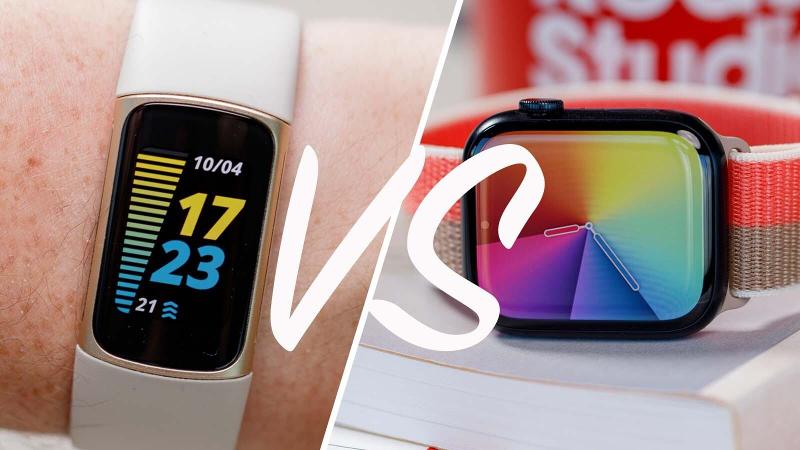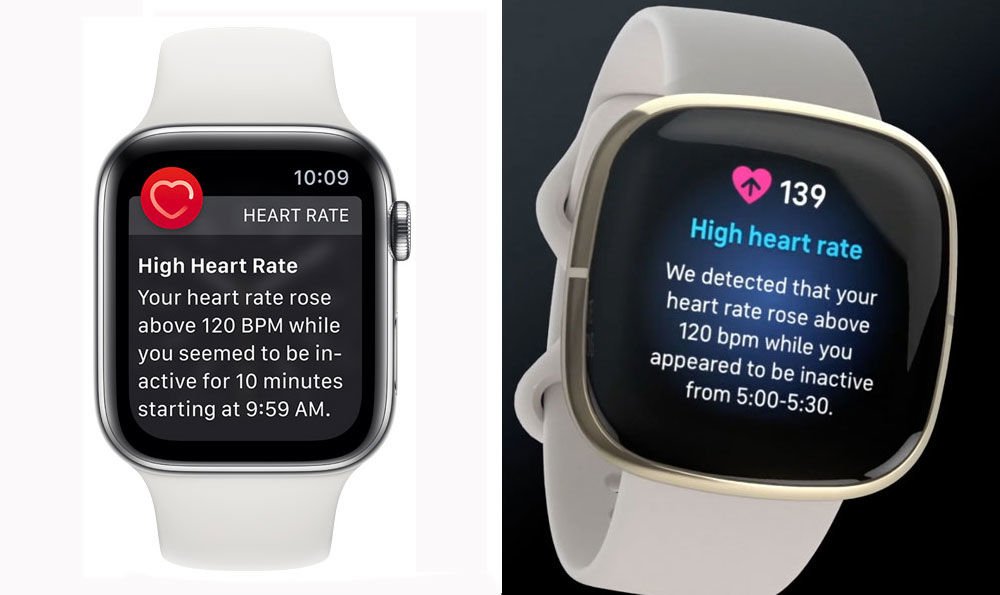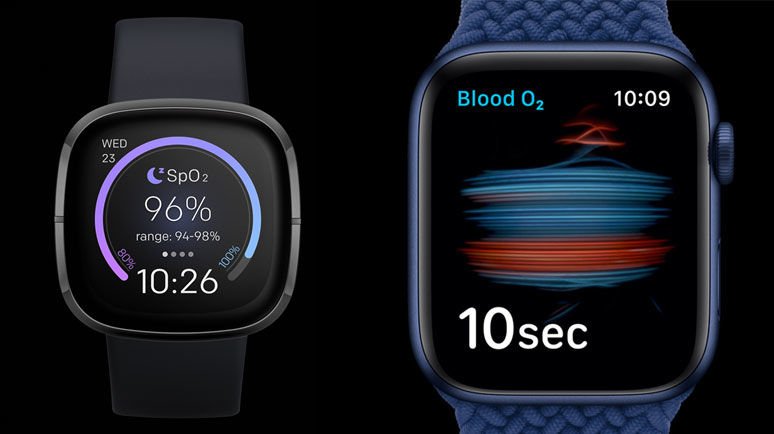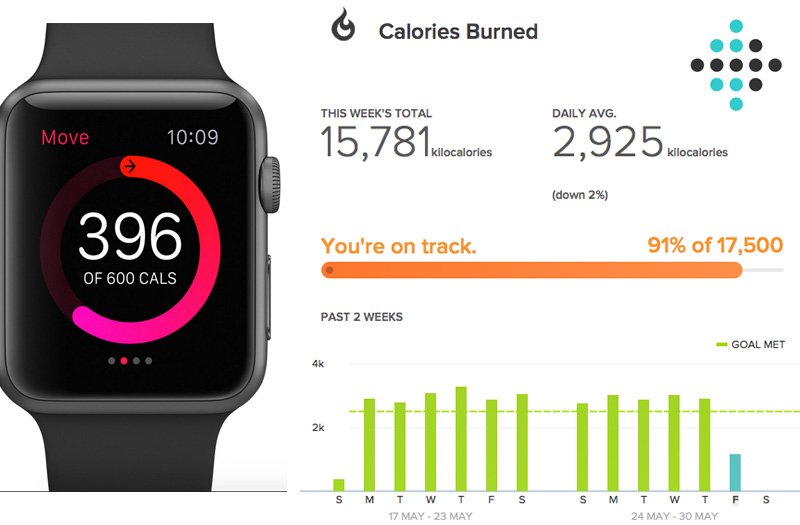Want an activity tracker but can’t decide whether to buy a Fitbit wristband or fork out for the rather lovely Apple Watch, now at Series 7? We pit Apple Watch vs Fitbit to see which comes out best on various aspects: fitness tracking, heart-rate monitoring, design, price, apps, battery life, phone calls, music, and so on.
Apple is known for its smartwatches, and Fitbit for its activity trackers and fitness and health smartwatches. But the boundaries and functions are getting blurred with Fitbit adding apps and lovely touchscreens to its trackers, and Apple adding more health features to its Watch.
Aside from the Sense and Versa family, Fitbits don’t run multiple apps like a smartwatch, but they are directly comparable on many of their fitness-measuring functions, design themes and functions. And most feature on-wrist notifications such as Caller ID, Texts and WhatsApp – which, to be fair, are the most used non-fitness apps on most smartwatches anyway.
As a direct comparison, we’ll look at the Apple Watch (including the Series 3, Watch SE and Series 7) vs the Fitbit Charge 5, Versa 2 and 3, and top-end Fitbit Sense.
There are money-off deals on the very latest Fitbit Charge 5, Sense and Versa 3; see our roundup of the best Fitbit deals. And look out for the best Apple Watch deals too.
Both Apple and Fitbit make excellent products, so it’s a matter of deciding which features really matter to you. We will focus on health and fitness as a core requirement, but there is more to both brands than just these functions.
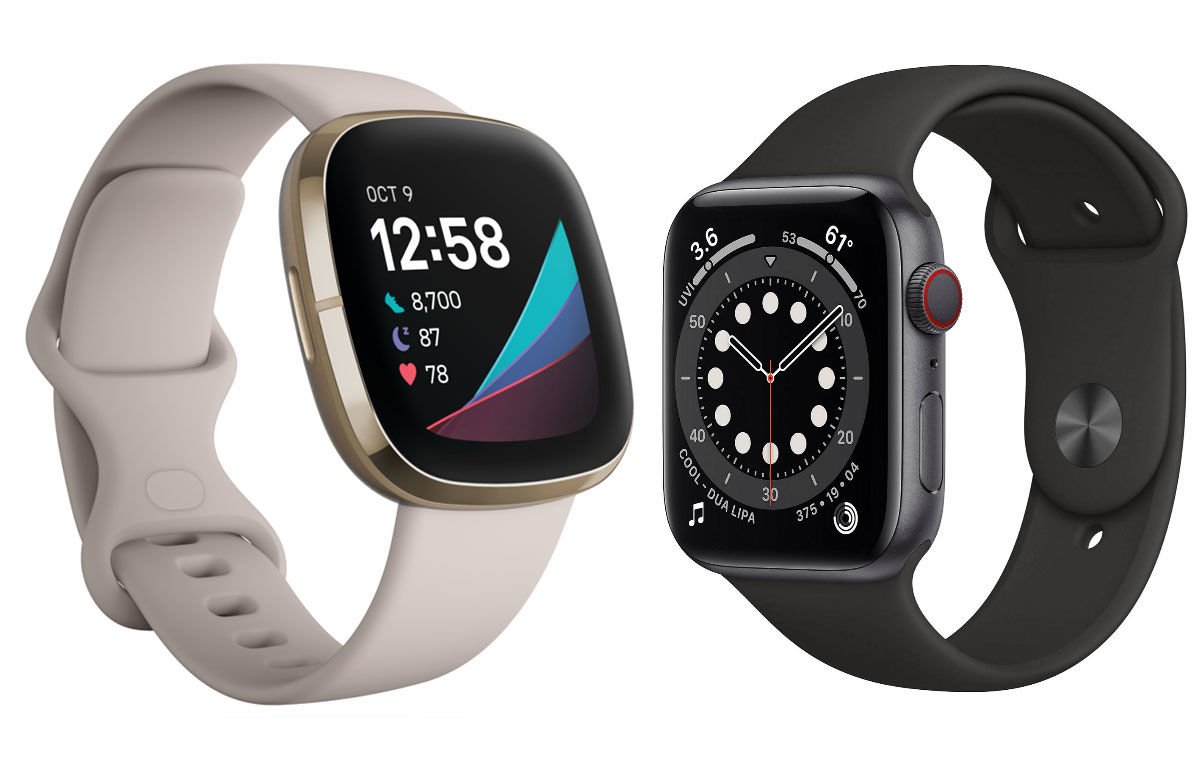
Activity tracking
Keeping fit doesn’t mean you have to be a gym freak or marathon runner. Keeping active throughout the day offers real health benefits too, and both the Apple Watch and Fitbit activity trackers are superb at getting you moving more.
The Apple Watch and Fitbit activity trackers measure steps taken, distance travelled and calories burned. They also show you how many minutes you’ve been active during the day. Each tracks your progress over time and can store historical data, and you set daily goals for yourself.
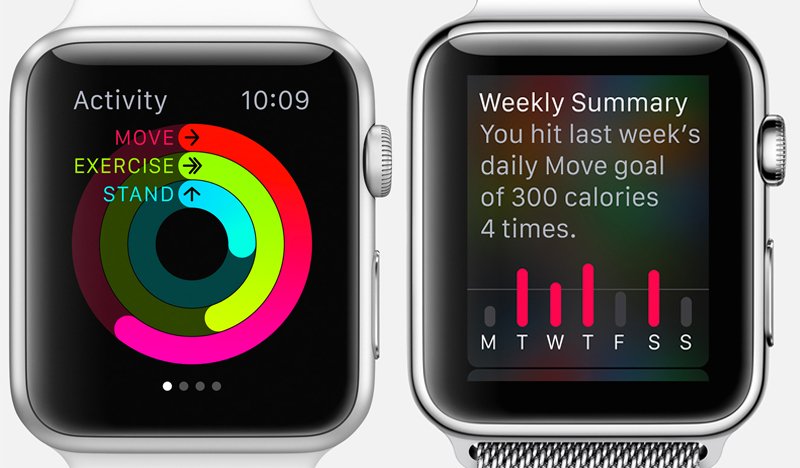
In addition, the Apple Watch Series 6 and later, along with Fitbit smartwatches (excluding the Versa Lite Edition) all have a barometric altimeter that counts distance climbed (take the hilly route home, not the flat one). The Fitbits also sync weight data from optional Fitbit Aria scales, while the Apple Watch will play nice with any other health and fitness app that syncs with Apple Health on iPhone.
As a result, the Fitbit models range from everyday fitness and active fitness (just like the Apple Watch) and further to sports and performance fitness – with the Charge 5, Sense and Versa 3 supporting running, cross-training, biking, strength and cardio workouts.
Serious runners dismissed the original Apple Watch and Fitbit for their needs, preferring the Ionic or other dedicated running watches from the Garmin or Suunto. But that changed with the release of the Apple Watch Series 2, which featured a built-in GPS just like the Fitbit Charge 4, Versa 3 and Sense (plus older Versa 2 and Ionic).
The Watch Series 3 and Watch Series 7 have faster processors (the 7’s processor is much faster so loads apps quicker) and but still weak battery life, topping out at 18 hours on average. A version with built-in 4G is also available so it can work without having to take your iPhone with you when you exercise.
This makes it a closer match to the Fitbit Sense and Versa 3, which (with similar built-in GPS, onboard music, notifications and contactless payments) can take care of most of your exercise needs without requiring you carry a phone or wallet around.
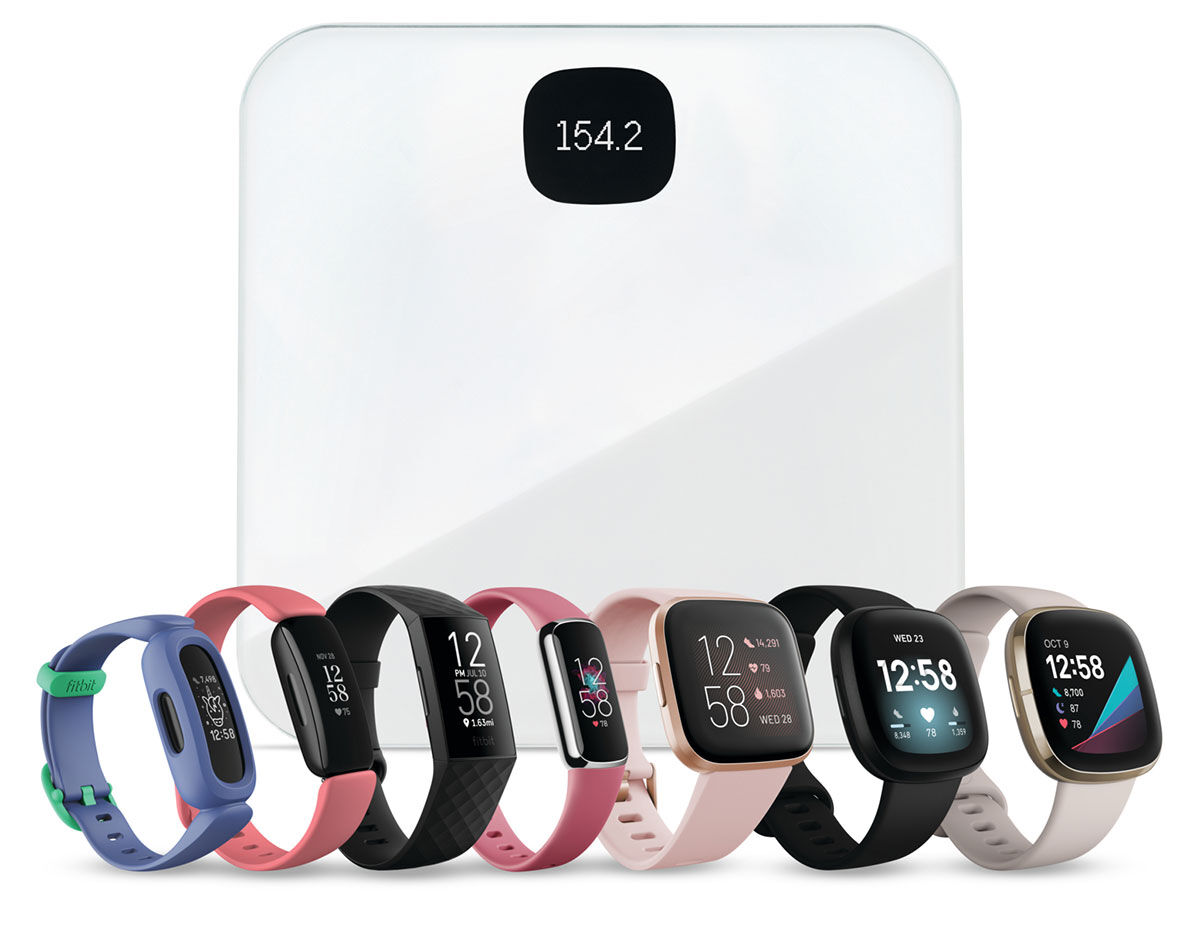
Fitness is obviously at the core of the Fitbits, whereas the Apple Watch counts activity tracking among its many features.
The Apple Watch offers two main fitness apps: Activity, which is all about health, movement, wellness and your daily routine; and Workout App, which tracks running, cycling and walking. All this data is collected on your iPhone via the Activity app, although you can get a more holistic view of their health by using the Health app on your iPhone, which integrates data from multiple sources, not only the Watch.
Apple uses movement and calorie burn rather than steps, which is Fitbit’s primary metric – although Fitbit also measures calories and other metrics. Apple sticks to movement rather than calories for users aged 13 and under.
Read here for some great tips and advice on how to use the Apple Watch Activity app.
While they work brilliantly with the iPhone, Fitbits do not officially support Apple’s Health Kit, although integration is offered by third-party apps.
You can see at a glance how far you are with your daily movement and health goals by looking at the Apple Watch’s colourful three rings, which light up to show your progress. The Move ring shows calories burned. The Exercise ring displays how many minutes of brisk activity you’ve achieved. And the Stand ring shows how often you’ve stood up to stop sitting down. The aim is to complete each ring every day. It’s a great motivation tool.
Apple defines exercise as any activity that’s equivalent to at least a brisk walk. The Watch looks at your heart rate and movement data, so just going for a walk might not move that green ring as much as you’d think. It wants you to get your heart pumping a bit faster. The Apple Watch learns your habits so will push you harder the more active you get over time.
We love the Apple Watch’s ping to remind you if you’ve been sitting around too long – time to stretch the legs and get the heart rate up for a bit, or at least stand up. Basically, it’s a get-off-your-arse alert, from the haptic pulses to your wrist to notifications, that you’ve been idle for a long period of time. You can actually get an alert even when standing up because what the Watch is actually measuring is your lack of moving about.
Fitbit’s Reminders To Move works in the same way, and is found on all Fitbits.
The Apple Workout app gives you real-time stats for exercise time, distance walked/run, calories burned and pace, and although it was initially frustrating to use, a redesign means it’s not only easier to use, but importantly now works with 80 percent of gym equipment, so you’ll get the data from the running machine or bike you use at your local.
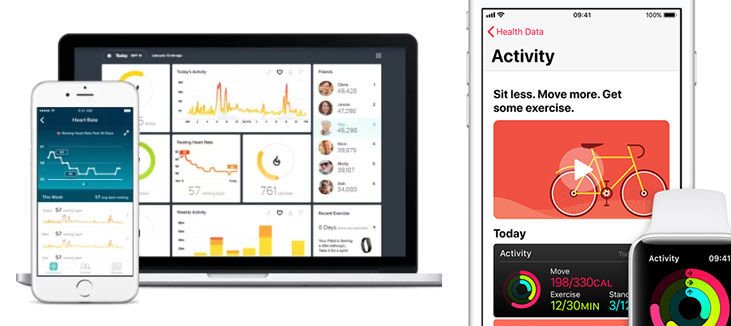
Setting goals: Fitbit wins
One big difference here is that Apple doesn’t let you set yourself goals for steps or other metrics, except for calorie burn. If burning calories is not your prime objective, then this is a definite limitation of the Watch.
In comparison, Fitbit allows you to set yourself specific goals for Steps, Distance, Calories Burned, Active Zone Minutes, Floors Climbed and your Hourly Activity Goal.
Heart-rate monitor: narrow Fitbit win
The Apple Watch and heart-rate-checking Fitbits use something called – deep breath now – photoplethysmography to measure your heart rate. This uses green LEDs on the underside of the wristband to detect blood volume and capillary-size changes under pressure. When your heart beats, your capillaries expand and contract based on blood volume changes. The LED lights reflect on the skin to detect blood volume changes.
Blood is red because it reflects red light and absorbs green light. When your heart beats, the blood flow in your wrist – and the green light absorption – is greater.
The Fitbits monitor your heart rate continuously, 24/7. They can store heart rate data at 1-second intervals during exercise tracking and at 5-second intervals all other times.
On the other hand (or should I say wrist?) the Apple Watch checks your heart rate only every ten minutes during the day. However, it does record your heart rate continuously when the Workout app is turned on, so you get constant feedback during training sessions. The Watch’s built-in heart-rate monitor does support external heart-rate monitors too.
Apple has improved the Heart Rate app, which now measures your resting heart rate and your recovery heart rate, and can give you notifications if anything seems awry.
The Apple Watch Series 7 comes with watchOS 8 pre-installed. watchOS 8 features a raft of new features and improvements, including enhanced sleep tracking, new workouts (including Pilates and Tai Chi), support for Fall Detection on bikes, improved e-Bike metrics, Siri-powered voice feedback during exercise and more.
Fitbit says that the Sense and Versa 3 have also improved heart-rate measurement, as the LED sensors have closer contact with the wrist.
The Apple Watch has the ability to detect and warn of a prolonged elevated heart rate when not exercising, and is able to spot low rates too (which could be a sign of bradycardia, when the heart is not pumping enough oxygen-rich blood around the body). It also looks out for irregular heart rhythms, notifying you of potential atrial fibrillation.
Patients visiting doctors often complain of heart problems that aren’t happening right then, so having detailed and long-term heart data on file in the Health app is potentially beneficial.
Let’s look at these heart sensors and how they can detect illness in more detail below.
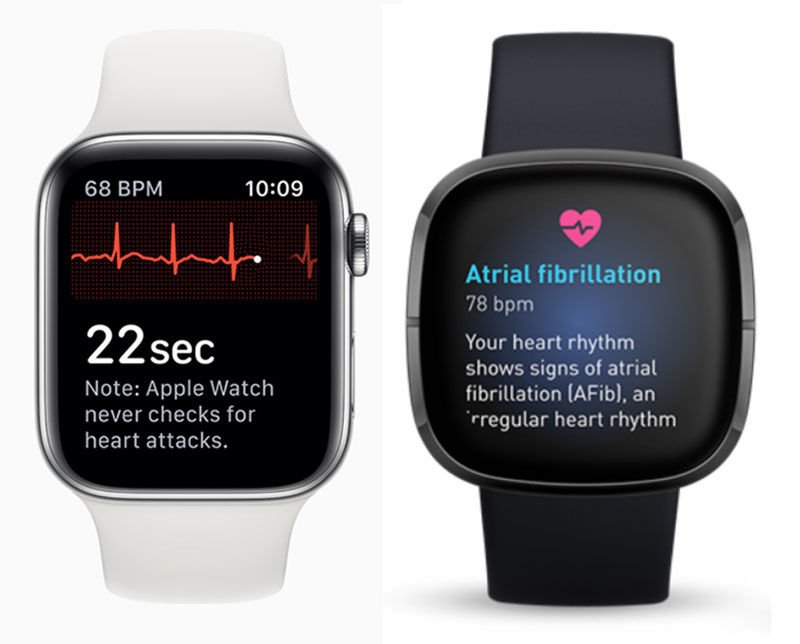
Checking heart irregularities: Draw
Measuring heart rate also allows for the devices to check when the heart’s rhythm is irregular – which can be a sign of atrial fibrillation (AFib), a leading cause of stroke.
Both Apple and Fitbit include the ability to measure a person’s electrocardiogram (ECG) signal.
The Fitbit Sense and Apple Watch include ECG tests. For example, by placing a finger on the Digital Crown of the Watch you can get it to run an electrocardiogram (ECG) test on you.
Each ECG app is CE marked and cleared in the European Economic Area and FDA-approved in the US.
Checking blood oxygen (SpO2) levels: Apple win
The balance of blood-oxygen saturation is vital to health.
Low blood oxygen levels could indicate a condition called Hypoxemia. Most people don’t have the chronic health conditions (asthma, heart disease, and chronic obstructive pulmonary disease) that require them to monitor their blood oxygen level, but if you do, then having an SpO2 sensor will be very helpful.
A normal SpO2 reading is typically between 95 and 100 percent.
Both the Apple Watch and the latest Fitbit smartwatches offer SPO2 sensors to detect blood-oxygen saturation. Both allow on-demand readings of your blood oxygen, but Apple’s solution is more flexible.
The new Apple Watch can take a blood O2 reading in just 15 seconds at any time of day, while Fitbit only measures your blood-oxygen levels while you sleep, and you have to remember to switch the clock face for it to take a reading unless you subscribe to Fitbit’s Premium service.
Fitbit users require a Premium subscription to then track trends over time in the Health Metrics dashboard within the Fitbit app.
You can also read your blood oxygen levels using a pulse oximeter. Here’s what that is and where to buy one.
Calorie counting: draw
The basic formula for losing weight is to count calories in and ensure you are expending more calories out through exercise. Both the Watch and Fitbits help you count these calories.
The Apple Watch uses motion and heart rate data to determine calorie count, which then dictates the Move metric of the Activity app. As you continue to wear your Apple Watch it will better learn your habits, average heart rate ranges, and normal activity levels, helping to make calorie counts more accurate.
Unlike Fitbit, Apple splits apart “resting calories” (calories you burn just by existing) and “active calories” (burnt through more vigorous activity). The Move ring is interested in Active, not Resting calories, which is a little more rigorous than Fitbit’s approach. Fitbit allows for “resting calories” too.
Your Resting Metabolic Rate (RMR) is the number of calories that your body burns while you are at complete rest (with muscles relaxed, such as asleep) to keep itself alive (sustain vital organs such as your heart, brain, nervous system, lungs, kidneys, liver, muscles, and skin) and digest food. (Technical bit: Resting Metabolic Rate is not the same as Basal Metabolic Rate (BMR), which excludes the calories burned digesting food.)
If you set your calorie-burn target high on the Apple Watch you’ll need to walk the equivalent of 20,000 Fitbit steps.
The likes of the Versa and Ionic recognise when you’re running and automatically enter Run Mode – starting the GPS or connected GPS – and even automatically pause when you do. Apple Watch also does this, although it’s not just limited to running, also able to detect exercises like outdoor walks and bike rides too.
Fitbit estimates the…
